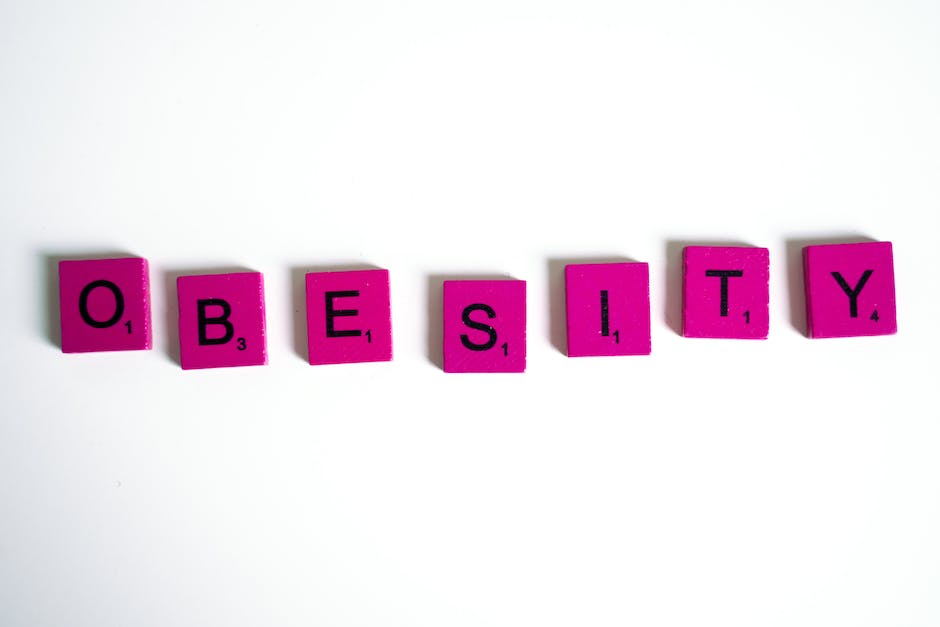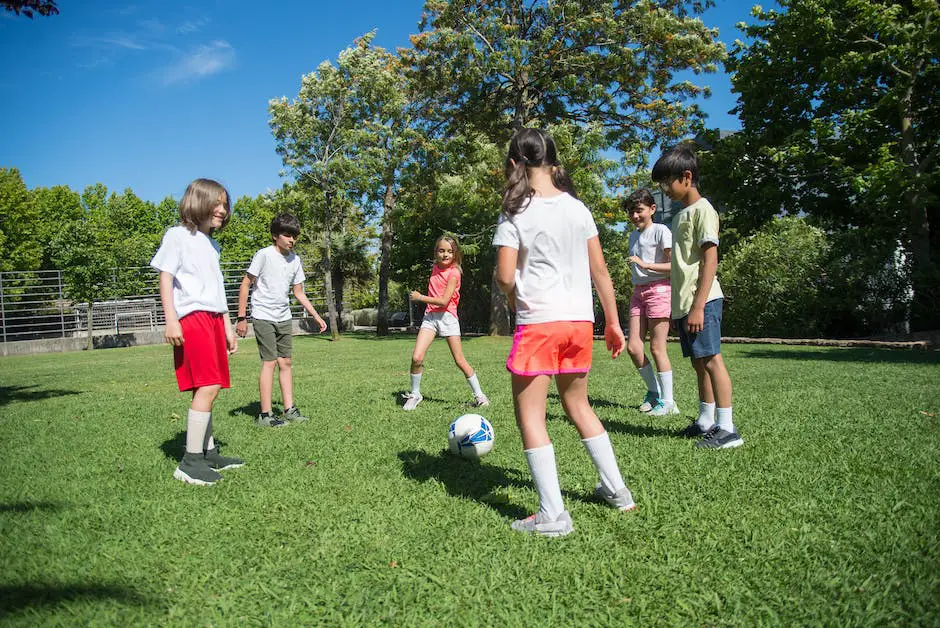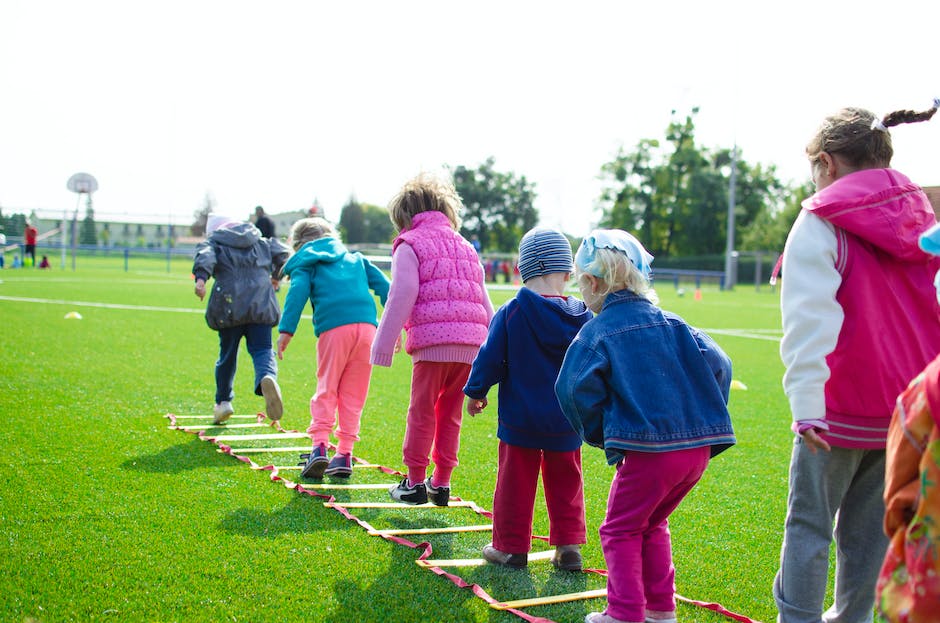The prevalence of child obesity is surging globally, with complex causes and implications that call for far-reaching investigations. Among these multifaceted factors, peer influence plays a significant and often overlooked role. In this structure, we will embark on an intricate exploration of how the company of peers can significantly affect a child’s weight management- dubbing it an essential focus when considering child obesity. A comprehensive overview will be provided, venturing into the prevailing dynamics of peer influence on dietary preferences, physical activities, and psychologically-induced eating habits. This offers a unique perspective to better comprehend the problem of childhood obesity and the roles different elements play in this health crisis.
An Overview: Understanding Peer Influence on Child Obesity
The Role of Peer Influence on Childhood Obesity: An Analytical Examination
In the realm of childhood health, an issue of grave concern is the escalating prevalence of obesity. This complex malady exhibits multifaceted causations, ranging from genetic predisposition to environmental factors. Among these, peer influence, while often overlooked, plays an instrumental role in impinging upon children’s dietary behaviors and physical activities, contributing significantly to the obesity epidemic.
From a developmental perspective, children’s behavioural tendencies are majorly shaped by their peers. In the context of dietary habits, a fascinating point of analysis are the numerous research studies revealing that children, especially during their preadolescent years, are more likely to conform to peers’ consumption patterns, in terms of both nutritional quality and quantity. If their social group demonstrates hedonic tendencies towards high sugar or high-fat foods, children often follow suit, a phenomenon known as ‘dietary convergence.’ This synchrony in eating habits, while fostering group bonding, is a noteworthy underlying cause for childhood obesity.
In addition to influencing dietary behaviors, peers substantially impact a child’s physical activity levels. Fascinatingly, it has been observed that children tend to be more physically active when their friends exhibit high levels of activity. A high-energy, active peer group can theoretically prompt increased physical exertion, and consequently reduce obesity prevalence. However, the advent of digital media and its absorption into children’s daily activities hold sway here. Peer cultures centered around sedentary gaming or internet surfing could undoubtedly contribute to the decrement of physical activity levels, promoting obesity.
An intriguing facet of the peer influence is the prevalence of weight-based social stigma among children. A culture that ridicules and marginalizes obese children could perpetuate a vicious cycle where the targeted child, in the absence of support or due to reduced self-esteem, continues unhealthy habits that further obesity. On the contrary, a supportive and empathetic peer group can influence obese children positively towards healthier lifestyle choices. Thus, the role of socio-cultural dynamics in peer groups remains pivotal in mediating childhood obesity.
Given the importance of peer influence, there is a dire need for evidence-based strategies that utilize this relationship to develop healthier dietary habits and physical activity patterns among children. Multidimensional interventions targeting social environments, cultural norms, and individual behaviors could transform schools and neighborhoods into obesity-preventing fulcrums, turning the tide in this escalating war against childhood obesity.
Studying obesity through the lens of peer influence broadens our perspective of this multifaceted issue. It not only enlightens us about potential solutions, but it also serves as a reminder that tackling childhood obesity is not just about altering a child’s behaviors. It’s about understanding the profound environmental and social influences that shape these behaviors and working towards reshaping the environment to cultivate a healthier generation.

The Psychological Dynamics of Peer Influence and Child Obesity
Unveiling the Psychological Dynamics: Peer Influence and Childhood Obesity
Gazing into the societal landscape of today it is not surprising to encounter a relatively precocious factor in the discourse of childhood obesity: Peer Influence. Vilifying the role of peers and their potential sway over dietary behaviors or activity levels, although valid, tends to mask the intricacies of the psychological underpinnings involved. Let us thus venture together into a detailed examination of these overlooked psychological mechanisms that influence the peer dynamics in childhood obesity.
At the heart of peer influence lies the psychological concept of social norm conformity, a process through which children adjust their attitudes and behaviors to align with perceived peer norms. The drive for acceptance and belongingness can cause a child to imbibe detrimental dietary patterns, engaging in calorie-dense food consumption or spurning physical activities. This vicarious learning or modeling, as Bandura’s Social Cognitive Theory terms it, occurs when children imitate behaviors exhibited by their peers.
Oppositely, a subtle but powerful facet of peer influence is the fear of social exclusion. Often triggered by weight-based teasing or body shaming, this dread motivates the child to conform to peer dietary habits out of a desire to fit in, despite the evident health risks. Such internalization of weight bias, both observed and experienced, might contribute to an increased sense of isolation, depression, or lowered self-esteem, further entrenching unhealthy behaviors.
Furthermore, the framework of peer influence extends into the realm of Self-determination Theory. This theory posits that motivation towards health-oriented behaviors can dwindle in the absence of autonomy, competence, and social relatedness. A child dictated by peers to participate in unwelcome physical activities, or coerced into eating healthier, may resist as a challenge to their autonomy. Thus, seemingly positive peer influence may inadvertently nurture a sense of incompetence or rebellion.
A close examination of these psychological mechanisms unveils the multilayered nature of peer influence, far beyond a mere adoption of behaviors. The challenge, therefore, lies not in countering peer influence per se, but harnessing these inherent psychological dynamics for cultivating healthier cultures.
Intervention strategies could entail nurturing a peer environment that values diversity in body sizes, fostering adaptive norms concerning food and physical activity, and reinforcing intrinsic motivation towards healthful behaviors. Additionally, leveraging the power of peer leaders could help alter the prevailing norms, veering towards more health-conscious attitudes throughout the peer group.
The discordance of childhood obesity and its psychological intersections with peer influence compels us to reconceptualize our approach. For it is not just about reducing high-calorie consumptions or fostering physical activeness; it is about understanding and harnessing the symphony of cognitive and emotional processes at play. By concentrating our efforts here, we find a promising pathway leading towards instilling healthier behavioral norms amongst our younger generations. Let this be both our challenge and our charge – a robust commitment towards healthier societies of the future.

Impact of Peer Influence on Dietary Preferences and Behaviors of Children
At the core of understanding childhood obesity and peer influence is the gravity of social norm conformity. Children tend to align their behaviors to mirror those of their peers, demonstrating an inescapable influence on their dietary habits and activity levels. The desire to belong and avoid exclusion propels children to adopt whatever dietary behaviors their peers display, regardless of if these behaviors are detrimental to their health.
Moreover, children also engage in vicarious learning and modeling, observing their peers’ behaviors and the consequences attached to these behaviors. Witnessing a peer overeat or engage in limited physical activity without immediate negative consequences might embolden them to replicate such behaviors, unwittingly contributing to obesity.
Fear of social exclusion plays a significant role, influencing dietary habits. Negative peer pressure can force children into eating patterns that may not be beneficial to their health. This fear-driven conformity often leads to unhealthy food choices and a sedentary lifestyle, major contributors to the burgeoning childhood obesity crisis.
Equally concerning is the internalization of weight bias, which is the negative judgment based on a person’s weight. When children face fat-shaming or weight-related teasing, they may resort to unhealthy coping mechanisms such as binge eating or avoiding physical activity, exacerbating the problem.
Understanding these dynamics lands us squarely on the bridge of self-determination theory, a psychological framework that is highly relevant to peer influence. This theory emphasizes the need for autonomy, competence, and relatedness for motivation and personal growth. Children’s dietary behaviors and physical activities can be heavily influenced by how much these meet their need for autonomy, or voluntary control, competence, or a sense of effectiveness, and relatedness, or a sense of belonging.
Harnessing these psychological dynamics can cultivate healthier cultures amongst peers. Instead of treating obesity as simply a physiological issue, a psychologically conscientious framework can unmask deeper underlying influences. Our approach to intervention strategies requires reckoning with these realities.
A focus on nurturing a peer environment that values diversity in body sizes can mitigate the impact of pervasive weight stigma. This approach highlights the need for acceptance, moving away from judgment based on physical appearance towards an inclusive atmosphere that respects all body sizes.
Additionally, fostering adaptive norms concerning food and physical activity can impact dietary preferences and promote healthier habits. Instead of unhealthy competition about who can consume the most fast food, a shift towards who can achieve the most steps in a day could pivot children’s approach to health and wellness.
Children’s intrinsic motivation towards healthful behaviors can be reinforced by leveraging the power of peer leaders. These influencers can help alter prevailing norms, inspiring healthier habits among other children.
Reconceptualizing our approach to childhood obesity involves a deeper understanding of the cognitive and emotional processes at play. This understanding empowers us to implement intervention strategies that consider the whole child, rather than just their dietary habits.
Finally, each child has the right to a healthy future. Our commitment towards healthier societies for future generations should drive us to ensure every child has access to nutritious food, engaging physical activities, and a supportive social environment. This commitment heralds a path to a future where our children make healthier decisions, not driven by fear, peer pressure, or stigmatization, but one spurred on by desire, understanding, and well-being.

Impact of Peer Influence on Children’s Physical Activity
In the quest to understand the complex issue of childhood obesity, one factor that is fundamental, but often neglected, is the role of peer influence. Peer influence is the process whereby children adopt behaviors and preferences similar to those of their peers, a phenomenon that extends its grasp to aspects such as eating habits and physical activity levels.
Children do not operate in social vacuums; rather, they are avid observers, often seeking to align their behaviors with those of their peers through a process known as vicarious learning or modeling. This practice extends itself to dietary habits and physical activities. The fear of social exclusion or the desire to fit in can trigger children to model their peers’ behaviors, even if these behaviors lean towards unhealthy dietary habits and a sedentary lifestyle.
The scourge of weight bias, wherein children internalize societal prejudice against larger body sizes, can further complicate the issue. This internalization not only fuels unhealthy coping mechanisms, such as binge eating or a tendency towards inactivity, but it can also have repercussions on the mental health of children. Understanding this complex interplay of factors requires an appreciation of self-determination theory, which posits that individuals are more likely to invest in behaviors that fulfill their innate psychological needs for competence, autonomy, and relatedness. As such, peer influence, a highly relatable factor, significantly impacts children’s physical behaviors.
Addressing the role of peer influence in childhood obesity necessitates a move away from simple “blame the victim” narratives. Instead, harnessing the positive dynamics, such as the role of peers in forming healthier habits, should be at the forefront of treatment strategies. This includes creating environments within peer groups that champion diversity in body sizes, thereby reducing the pressure to conform to unrealistic body standards.
In tandem, fostering adaptive norms concerning food and physical activity will be beneficial. By encouraging healthier eating choices and enjoyable physical activities within peer groups, the intrinsic motivation of children towards these healthful behaviors can be reinforced. This can have profound implications on their immediate health and their health trajectories in adulthood.
Leveraging the power of peer leaders, children who have a substantial influence over their peers’ behaviors, can also be instrumental in shifting prevalent norms and behaviors. By influencing their peers towards healthier practices, these leaders can help in reducing the burden of childhood obesity.
A comprehensive approach to dealing with childhood obesity needs to reconceptualize peer influence, not just as a problem, but also as a potential part of the solution. Aligning this reconceptualization with our understanding of the cognitive and emotional processes at play will provide a more rounded and effective strategy.
Ultimately, the goal is to create a society where every child has access to nutritious food, engaging physical activities, and a supportive social environment. This commitment, driven by response to evidence, will ensure healthier societies for future generations. Peer influence, if harnessed correctly, can be a powerful tool in creating these conducive environments and propagating healthier lifestyles among children.

Strategies to Mitigate the Negative Impact of Peer Influence on Child Obesity
Childhood obesity is a complex and multifaceted issue not confined to individual behaviors but shaped by a vast array of social and environmental influences as well. Among these influences, none can be understated, particularly the context of peer influence and its impact on children’s dietary behaviors and activity levels. Peer influence, fueled by children’s innate desire to fit in with their social group, has proven capable of both promoting and discouraging healthy behaviors.
How then, can we harness the power of peer influence to positively shape dietary habits and physical activities among children? Vicarious learning or modeling provides some direction. Children often learn not just by listening to advice, but by observing their peers’ behaviors. Adjusting the behaviors modelled within a child’s immediate peer environment can thus lead to altered dietary and activity patterns. This approach moves away from the harmful narrative of victim-blaming and shifts the focus towards the dynamics of positive peer influence.
Fear of social exclusion and the drive to ‘fit in’, often prompt children to model unhealthy behaviors. It is here that the understanding of weight bias and its impact on coping mechanisms becomes essential. Obesity stigmatization often leads to various coping strategies, some which might involve unhealthy eating and sedentary behavior patterns. Awareness is key in reducing such bias.
The self-determination theory also provides significant insights in understanding this complex issue. Fostering an environment that fuels children’s intrinsic motivation to partake in healthier behaviors has a strong connection with enduring changes. This cultivates an environment where personal health and wellbeing are the driving factors rather than meeting external standards.
Creating welcoming environments that value body size diversity may help children fear less about fitting into the societal norms, hence reducing the fear to ‘fit in’ that leads to unhealthy behaviors. This requires a shift in cultural norms, moving towards the celebration and acceptance of body diversity.
Moreover, fostering an adaptable construct of norms around food and physical activities within children’s peer groups could spur positive peer influence. Encouraging healthy food choices and physical activities can become popular trends within peer groups, thereby positively influencing health behaviors.
The power of peer leaders or influencers also holds immense potential to alter negative behaviors. These influencers can set the pace for healthier lifestyle choices and routines among their peers. Initiatives that involve the training and use of peer leaders as part of comprehensive school or community-based interventions are thus essential to tap into this potential.
To mitigate the negative effects of peer influence on childhood obesity, a multidimensional approach is needed to foster a healthier lifestyle and approach towards body image among children. The emphasis should not be on targeting the obese child but reconceptualizing the approach, focusing on the peer environment. Keeping in mind the cognitive and emotional processes at play, and integrating those in the formulation of strategies targeted at the roots of peer influence can lead to lasting societal and behavioral changes. This gives every child the prospect of having access to nutritious food, engaging physical activities, and a supportive social environment.
This way, the power of peer influence can be harnessed to promote healthier lifestyles among children, transforming the current narrative on childhood obesity from a problem-focused one to a solution-oriented discourse. This not only helps in managing the childhood obesity epidemic but also brings us one step closer to cultivating a healthier future generation.

Arming children against the negative influences of their peers regarding weight and eating habits necessitates proactive and tactical strategies. It requires that parents, educators, and peers themselves be educated about the influence they wield on a child’s physical health. This actionable information will enable them to foster positive dietary habits and an active lifestyle, consequently counteracting the sought peer-induced obesity among youngsters. As such, the importance of peer influence should not be understated in our journey to combat childhood obesity, and a continuous commitment to research, education, and advocacy should be maintained.
Writio is the content magician, offering enchantingly written articles. This mesmerizing page was crafted by the mystical Writio.
Thank you for reading this post, don't forget to subscribe to our free newsletter
!
